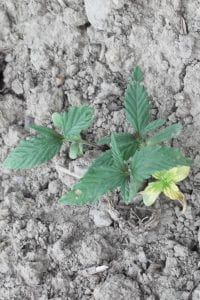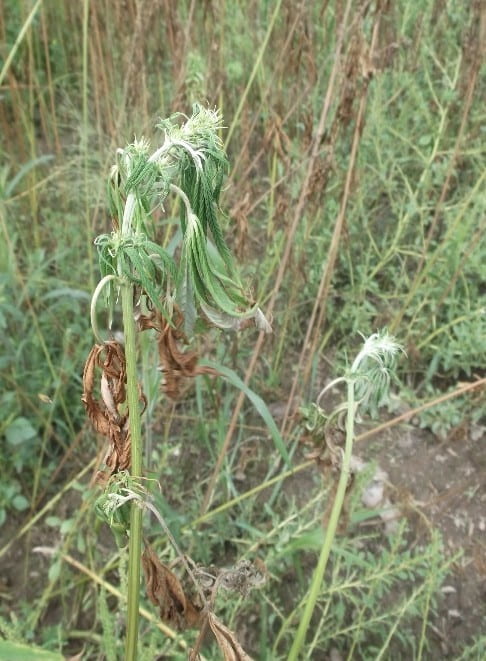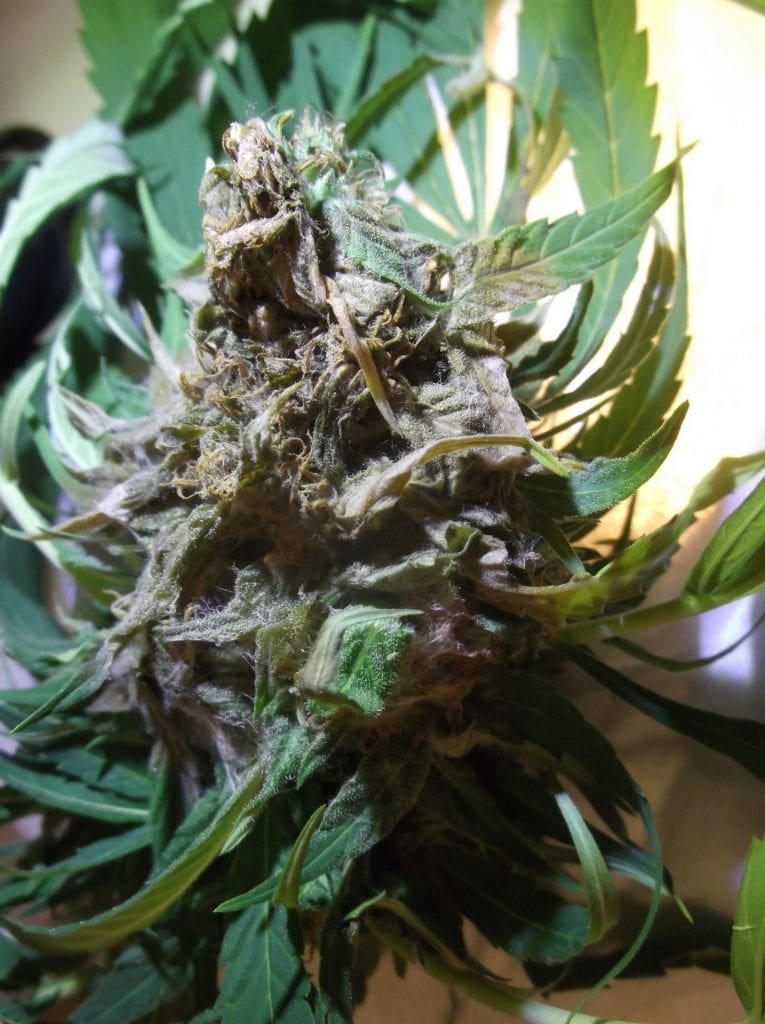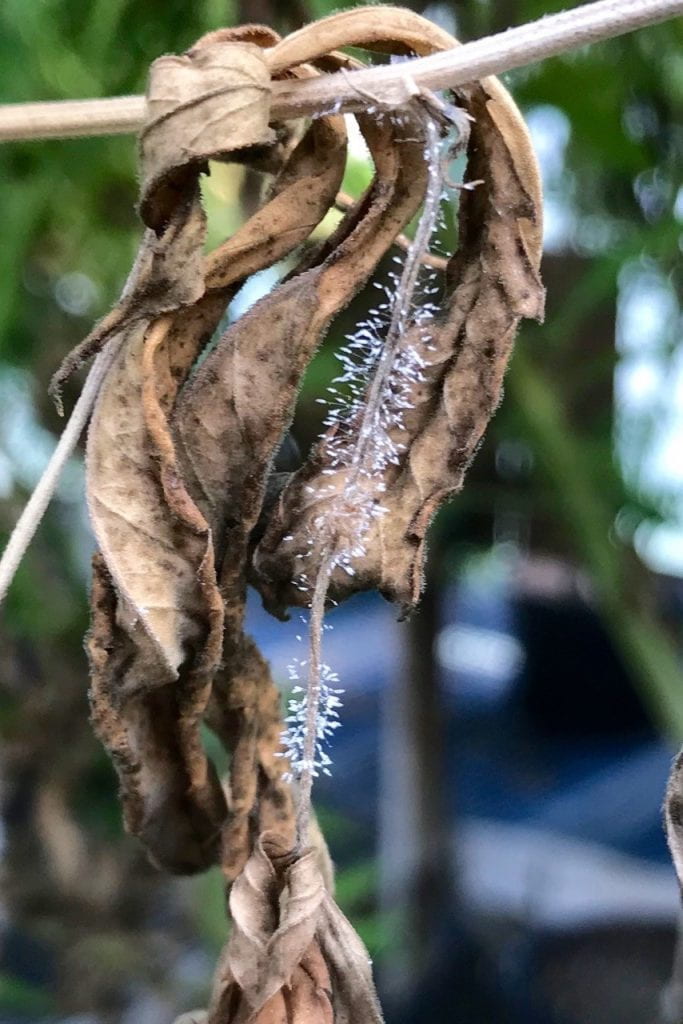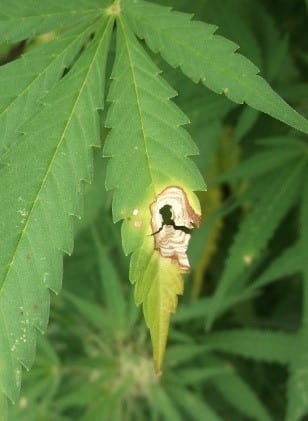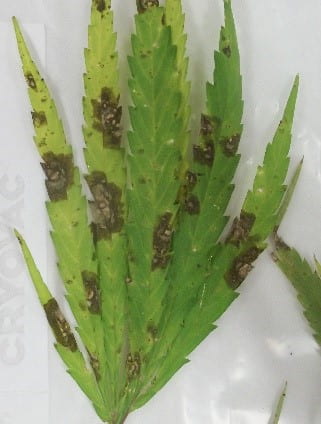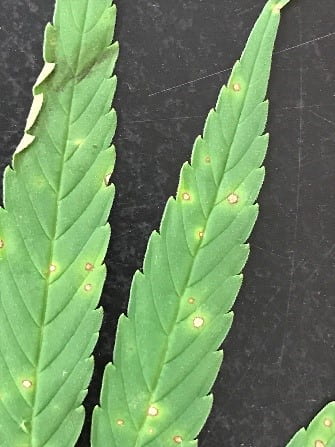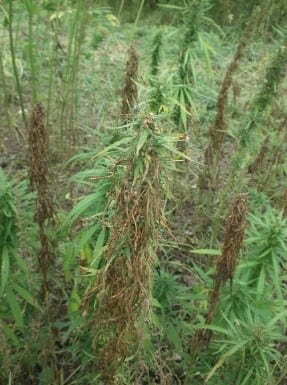Click here for a printer-friendly version of this document.
NOTE: The information in this document is superseded by a newer version, available here.
Authors
Gary Bergstrom, Jennifer Starr, Kevin Myers, and Jaime Cummings
Infectious diseases are likely to reduce the yield and quality of hemp as this crop is grown more widely and more frequently in the same fields in New York. The cornerstone of disease management is prevention. This is accomplished by planting hemp following crops with no or few pathogens in common with hemp; purchasing viable, clean, certified seed; preparing a good seedbed on a well-drained site; sowing at recommended times, populations, and depths for optimal canopy development and weed suppression; and timely harvest and appropriate post-harvest drying, cleaning, storage and processing of grain, buds, and fibrous tissues. Currently, no fungicides are labeled in NY for control of hemp diseases. Research is being conducted to determine the efficacy of synthetic and biological fungicides that could be labeled for future seed or foliar application.
Please help Cornell assess diseases in hemp. If you observe symptoms you think may be disease, contact your local Cornell Cooperative Extension Crops Educator or the Cornell Field Crops Pathology lab: jkk26@cornell.edu or gcb3@cornell.edu
Seedrots and seedling blights
Seedrots and seedling blights are caused by seed-borne and soilborne microbes, particularly by the oomycete Pythium and fungi in the genera Fusarium, and Rhizoctonia.
Pythium and Fusarium species can become systemic and induce root, crown, and wilt symptoms, and reduce yield.
Molds
White mold is a significant threat to hemp. The fungus, Sclerotinia sclerotiorum, also attacks soybean, forage legumes, and many vegetable crops and broadleaf weeds, and it survives in soil for more than 2 years. Hemp should be grown in rotation with non-host crops such as cereals, and broadleaf weeds should be suppressed.
Botrytis gray mold is the most frequently encountered disease of hemp in NY in both fields and greenhouses. It is favored by high humidity and poor airflow.
Leaf Spots
Diverse leaf spots have been diagnosed in New York in association with several fungal genera including: Bipolaris, Boeremia (Phoma), Cercospora,Colletotrichum, Cristulariella, Leptosphaerulina, Phaeomycocentropora, Septoria, and Stagonospora. Bipolaris leaf spot is a newly discovered disease in New York and Kentucky and is widely distributed and shows severe disease in some hemp varieties. We are in the process of demonstrating pathogenicity of the fungal isolates collected from hemp.
Planting resistant hemp varieties is likely to be an important control measure as we learn more about varietal reactions to the most important fungal pathogens.
Powdery mildew
Powdery mildew occurs widely in greenhouses. Biocontrol products and varietal resistance are being evaluated as future control methods.
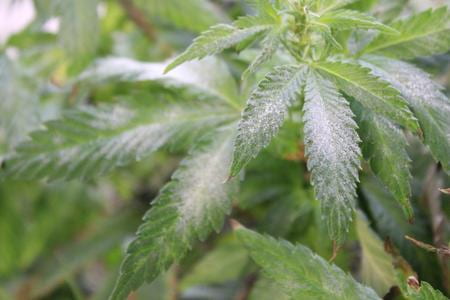
Fusarium contamination
The infection of female flower buds and grains is a serious and underestimated disease as it may result in contamination by Fusarium mycotoxins. We have found contamination of hemp grain in excess of 7 ppm of deoxynivalenol (vomitoxin). A survey of New York hemp grain for mycotoxins is being conducted in 2019.
